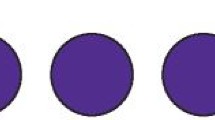Abstract
Data sources
PubMed, EMBASE and Cochrane Central Register of Controlled Trials.
Study selection
Randomised and nonrandomised, controlled, and prospective studies comparing preventive regimes for root caries were considered. Only English or German language studies were considered.
Data extraction and synthesis
Standard data items were extracted. Mean differences (MD) and standard mean differences (SMD) were primary effect measures. Changes were calculated for DMFRS/DFRS (decayed, missing, filled root surfaces), and RCI (root caries index). Random-effects meta-analysis was conducted. Study quality was assessed using the Cochrane risk of bias tool and grading of evidence was performed according to the GRADE.
Results
Thirty trials reported in 34 studies involving 10,126 patients were included. Twenty-nine were RCTs, the other a controlled trial. Risk of bias was considered low for only five studies. In all 28 chemical agents were tested. Eleven studies assessed dentifrices; ten rinses; eight varnishes; three fluoride solutions; three gels; two ozone applications; one preventive dental regimen. Meta-analyses revealed that dentifrices containing 5,000 ppm F- (RR = 0.49; 95% CI= 0.42, 0.57; high level of evidence) or 1.5% arginine plus 1,450 ppm F- (RR = 0.79; 95% CI = 0.64, 0.98; very low level) are more effective in inactivating RCLs than dentifrices containing 1,100 to 1,450 ppm F-. Self-applied AmF/SnF2-containing dentifrice and rinse decreased the initiation of RCLs when compared with NaF products (SMD = 0.15; 95% CI = −0.22, 0.52; low level evidence). Mouth rinse containing 225 to 900 ppm F- revealed a significantly reduced DMFRS/DFRS (MD = −0.18; 95% CI = −0.35, −0.01; low level) when compared with a placebo rinse. Significantly reduced RCI was found for Chlorhexidine (MD = −0.67; 95% CI = −1.01, −0.32; very low level evidence) as well as SDF (MD = −0.33; 95% CI = −0.39, −0.28; very low level) when compared with placebo varnish.
Conclusions
Based on meta-analysis, dentifrice containing 5,000 ppm F- and professionally applied CHX or SDF varnish may inactivate existing and/or reduce the initiation of RCLs. However, results should be interpreted with caution due to the low numbers of clinical trials for each agent, the high risk of bias within studies, and the limiting grade of evidence.
Similar content being viewed by others
Commentary
Ageing of the population will result in an increase in the incidence of root caries as it has been shown that elderly patients are at a higher risk of root caries than younger populations.1 Root caries lesions frequently exhibit mixed cavity margins positioned in enamel as well as dentine, and restoration of this cavity type is challenging with respect to the lack of restorative materials which bond equally well to both dental tissues. The evidence base for the choice of restorative material for root caries lesions is neither plentiful nor convincing and studies have reported failure rates as high as 68% within 12 months.2,3 In light of this, prevention or remineralisation of these lesions is highly desirable for patients and clinicians alike.
This systematic review aimed to compare chemical agents in the prevention of new caries on root surfaces or to inactivate existing lesions. PubMed, EMBASE and the Cochrane Central Register of Controlled Trials were searched for clinical trials which utilised preventive dental regimes and/or one or more chemical agents applied by a dental professional or by the patient themselves. Thirty-four articles were included reporting 30 trials with 10,136 patients and analysing 28 chemical agents. These chemical agents were dentifrices (eleven studies), rinses (ten studies), varnishes (eight studies), fluoride solutions (three studies), gels (three studies) and ozone (two studies). One study investigated a preventive regime without any chemical agent.
Meta-analyses were performed where possible, however once the studies were subdivided the number of studies in each analysis were very small (two to four studies), and the number of events in each group was low. Many of the trials had a short follow-up time of less than one year.
Also, results were reported at the tooth or root surface level and it must be remembered that these events are not independent of each other if multiple new carious lesions develop within one individual. Studies also utilised different diagnostic criteria in the identification of root caries and the level of activity of these lesions. This presents difficulty when conducting any meta-analyses of these trials.
The authors of this systematic review concluded that dentifrice containing 5,000 ppm fluoride and professionally applied chlorhexidine or silver diamine fluoride varnishes may inactivate existing and/or reduce the initiation of root caries. However they caution the reader that this is based on a low number of clinical trials which have a high risk of bias. While this review attempts to answer a timely and important clinical question, the number of chemical agents reported across the literature was large and no single intervention can be identified as our current ‘gold standard’ for the prevention or remineralisation of carious lesions on root surfaces.
Practice points
-
Root caries can be prevented or arrested using topically applied agents. These can be applied by a dental professional or by the patient themselves.
-
Based on the evidence available, patients at risk of developing root caries or who have existing root caries may benefit from daily use of a prescription strength toothpaste which will deliver 5000ppm fluoride or professional application of a chlorhexidine or silver diamine fluoride containing varnish.
References
McNally ME, Matthews DC, Clovis JB, Brillant M, Filiaggi MJ . The oral health of ageing baby boomers: a comparison of adults aged 45-64 and those 65 years and older. Gerodontology 2014; 31: 123–135.
De Moor RJG, Stassen IG, van't Veldt Y, Torbeyns D, Hommez GMG . Two-year clinical performance of glass ionomer and resin composite restorations in xerostomic head- and neck-irradiated cancer patients. Clin Oral Investig 2011; 15: 31–38.
McComb D, Erickson RL, Maxymiw WG, Wood RE . A clinical comparison of glass ionomer, resin-modified glass ionomer and resin composite restorations in the treatment of cervical caries in xerostomic head and neck radiation patients. Oper Dent 2002; 27: 430–437.
Author information
Authors and Affiliations
Additional information
Address for correspondence: RJ Wierichs, Department of Operative Dentistry, Periodontology and Preventive Dentistry, RWTH Aachen University, Pauwelsstrasse 30, 52074 Aachen, Germany. E-mail: rwierichs@ukaachen.de
Wierichs RJ, Meyer-Lueckel H. Systematic Review on Noninvasive Treatment of Root Caries Lesions. J Dent Res 2015; 94: 261–271. 2014 Nov 14. pii: 0022034514557330. [Epub ahead of print] Review. PubMed PMID: 25398366.
Rights and permissions
About this article
Cite this article
Hayes, M. Topical agents for root caries prevention. Evid Based Dent 16, 10–11 (2015). https://doi.org/10.1038/sj.ebd.6401074
Published:
Issue Date:
DOI: https://doi.org/10.1038/sj.ebd.6401074
This article is cited by
-
Arrest of root caries with an adjuvant chlorhexidine–fluoride varnish over a 12-months observation period: a QLF-analyzed, placebo-controlled, randomized, clinical trial (RCT)
Odontology (2022)
-
Minimal intervention management of the older patient
British Dental Journal (2017)
-
Management of Salivary Hypofunction in Sjögren’s Syndrome
Current Treatment Options in Rheumatology (2015)



